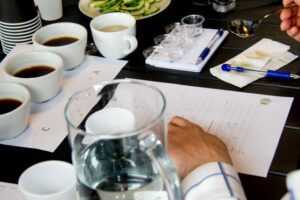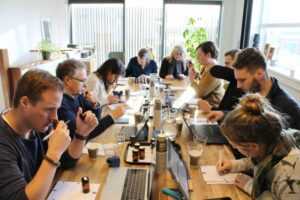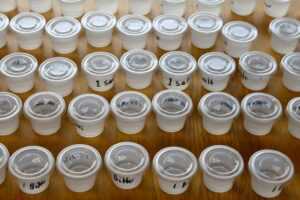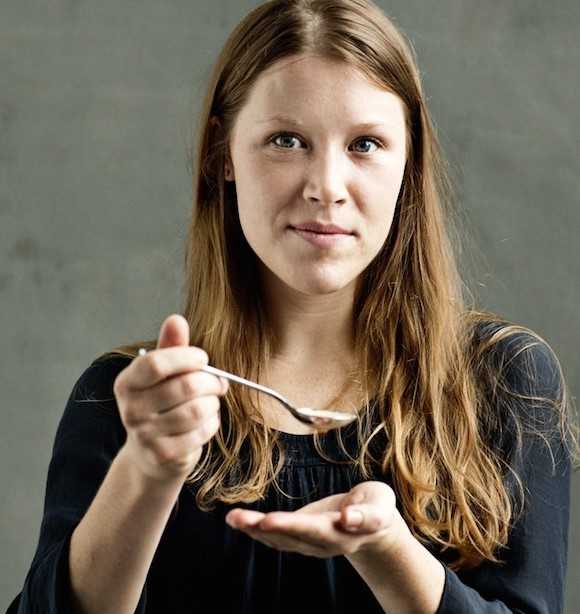MILAN – Passion and science are not oxymorons, but they often find a way to work together with incredible results: a concrete example is Ida Steen, great coffeelover and researcher who has put her skills to use for consultancy, and trainings of exclusive Coffee Mind courses and also SCA sensory courses.
Let’s talk with her about how the senses guide tasting and perceive the many organoleptic characteristics in the cup.
Steen, let’s start with the basics: you’re a sensory scientist, but what exactly does that mean, and how does one become one?
“I have a background in Sensory Science from the University of Copenhagen, where I graduated my master at the faculty of Food Science in 2014. Now I am on an Industrial Ph.D. project, also in cooperation with the University of Copenhagen, which means that I am doing research within the area of sensory science – and therefore, my job title at CoffeeMind is Sensory scientist.
A sensory scientist in the coffee industry conducts research and tests the sensory qualities of coffee. This is usually done in three steps; firstly, it is tested whether the coffees of interest taste different; after that, a sensory panel is used to describe the difference between the samples. Then, affective tests determine consumer preferences and willingness to buy.
Sensory science is a discipline that deals with the human sensory perceptions of and affective responses to coffee. It is a multidisciplinary field that deals with food science, physiology, psychology, behavioral science, mathematics, and statistics.
The main focus of my Ph.D. project is to develop sensory training proved to improve the sensory skills of professional coffee tasters. The recent outcome is our newly launched e-learning-based sensory training kit and program.”
Briefly, what does the CoffeeMind project consist of? What services do you provide and how did it all come about?
Steen: “In CoffeeMind, we do education, consultancy, and research within sensory science and coffee roasting. We have a science-based approach to teaching. We’re looking to find scientific evidence for what we teach, which has been possible through our close collaboration with Food Science at the University of Copenhagen and has led to more than 30 scientific research projects, of which 11 have been published in scientific papers.
We are deep in science, but we are not only geeky scientists; we also have a lot of hands-on experience teaching and training coffee professionals. Since 2007 we have taught more than 2000 individuals roasting and sensory skills, and both Morten and I have been part of the SCA(E) creators groups for years.
CoffeeMind Academy is located in Copenhagen, Denmark. We have a fantastic playground with six different brands of coffee roasters with different technologies for our students to try among all our sensory experiments.
We offer a variety of courses and learning materials, both physical at our academy in Copenhagen and online, as both virtual and e-learning-based courses. Our passion is to develop simple, evidence-based learning materials and approaches to sensory and
coffee roasting. This has led to the development of our aroma memory game: Smell&Tell, our CoffeeMind Flavour Wheel, and recently our Sensory Training Kit and Program.”
Knowing how to actually taste coffee is a skill that holds its own for all professionals: Steen, can you explain why it is a must-have among your skills?
“No matter where you are in the coffee industry, whether you are a farmer, green coffee buyer, coffee roaster, or barista, you need to have good sensory skills to judge your coffee’s quality and know how to improve for example the roast profile or the brew.
To me, it is essential to know one’s sensory abilities, trust what you taste, and know one’s strengths and weaknesses to know where to focus on improving. Also, it is crucial to be calibrated with colleagues to be able to discuss the quality and flavour profile of the coffees. My experience is that surprisingly not all are aware of the difference between sour and bitter, the importance of our nose when evaluating coffee flavour or how much we differ in sensitivity to, for example, different types of bitterness. ”
What are the first steps for those who want to train scientifically on tasting? Steen, what do you teach as first things to your trainees?
“I always start by being sure we speak the same language. When you take your first step into sensory science, it is important to understand the difference between taste and aroma. A popular definition of taste is the sensations in your mouth during eating. A good example of how it is used in everyday language is to say, “this ice cream tastes like vanilla.”

However, If you look at this scientifically, it does not taste like vanilla; it has a vanilla aroma that is perceived by our retronasal system – which makes us think of it as a taste.
Taste is what we perceive in our mouth as the five basic gustatory sensations; bitter, sweet, sour, salty, and umami. In comparison, aroma can be perceived either as orthonasal, through our nasal cavity, or retronasal, through our oral cavity and up to the olfactory epithelium.
Retronasal aroma perception is activated only when breathing out through the nose between chewing or swallowing. Flavour is a useful word that includes all the sensory impressions in the mouth. This means that if you describe the flavour of a cup of coffee, you are talking about the perceived combination of taste, aroma, and mouthfeel.
When it comes to the training of ones, sensory skills awareness and exposure are important. Try to be extra aware of everything you taste and smell – and remember to put the words on! Many of us grew up learning to tell whether something smells good or bad, but we were never taught to name the smell – therefore, it is difficult.
Also, expose yourself to as many different flavours as possible, e.g., find something new to taste every week, or if you need inspiration, use our Flavour Wheel, one category at a time. All the descriptors on the wheel should be quite easy to find. – or if you really want to improve join our four weeks e-learning based training program! We will ship a training kit with coffees, basic tastes and aromas to train on!
How do you teach something as practical as a sensory experience online?
“All our online sensory courses comes with either a list of things for you to find by yourself or we send a sensory kit to you – of course any sensory course needs real sensory experience, that’s why it is so much fun.”

How do you develop, for example, one of your sensory training programmes?
“Our sensory training program has been developed over the last six years as a result of my research. This means that almost 200 students have tested different training programs for us, and based on the results we have created one with the exercises that proved to improve the students’ sensory skills. ”
How many aromatic characteristics can you perceive in a cup?

“To be earnest, I do not focus too much on how many, but more on how much I agree with the persons I am evaluating the coffee with. Usually, I prefer to keep things simple and focus on the basic tastes and the inner circle of the Flavour Wheel. To me, it is more important that we can agree that a coffee is e.g., floral and citrus fruity than discussing whether it is rose or coffee blossom, lemon or lime. That said, I also find it fun to train the recognition of different aromas!
On a note, remember always to taste the coffee blinded and write down your description before discussing it – it is so much fun to see that your colleague wrote down the same flavour descriptors as you.”
Have you ever thought of testing your scientific skills in cupping competitions?
“I am afraid the time pressure of the cupping competition would make me too nervous – remember, I am more used to focused evaluation where you have several minutes in a small white, sound-free, sensory booth and only one coffee at a time.”
Steen, your research work in collaboration with the University of Copenhagen, around which themes do you develop?
“Basically, everything that has to do with sensory and coffee roasting. We often get inspired through our teaching; if a question arises, we can find a student to help us carry out a research project. That was actually how I first started in CoffeeMind; I did a research project on how the serving temperature of coffee influences its flavour.”
What factors influence the sensory experience of a cup?
“That’s a big question, as every small step in the process from farm to cup influences the final flavour. We have investigated the effect of different fertilizers and fermenting methods on the farm, different roasting profiles, the brewing water, and the serving temperature, just to mention a few factors.”
What are the next steps in the field of sensory science and for Coffeeminds? What still needs to be explored further?
Steen concludes: “We are trying to bust some of the coffee myths out there. Soon we hope to publish our work on acidities in coffee – which we have found to be of much less importance than thought by the industry.”


















